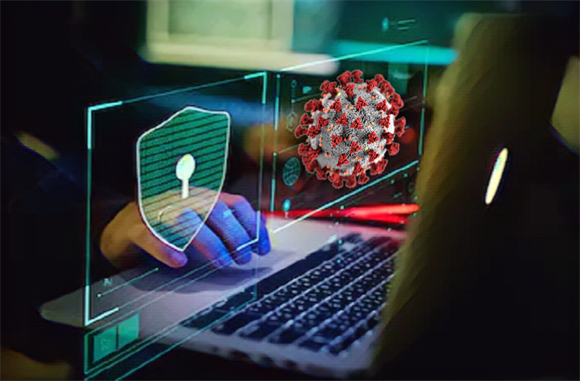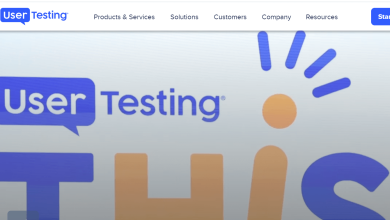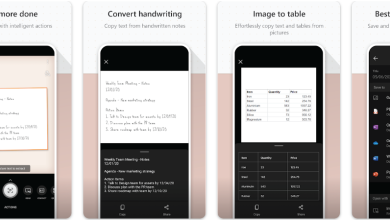The Covid-19 crisis is leading to more cyberattacks, Here’s Why?

On 24 March 2020, the president of the European Commission warned that cybercrime is on the rise due to the coronavirus pandemic. As technology is evolving, so do cybercriminals. Currently, the 5th generation and 6th generation cyberattacks are creating a lot of damage and are posing severe security risks.
The ongoing coronavirus crisis had become an opportunistic moment for cybercriminals. As more countries have announced lockdown measures to control the spread of coronavirus, people around the globe are increasingly spending time online. It is more important than ever to secure user data with stringent security measures, for example, ensuring that you install an SSL certificate on your site.
A report from Cybersecurity Ventures predicts that damages due to cybercrime will reach USD 6 trillion annually by 2021. Often, small business owners don’t prioritize their online security and think that cyberattacks affect big companies and enterprises. But this is untrue. Cybercriminals come in all stripes and shades.
Breaking enterprise security systems is hard and can take weeks to be successful. For this reason, small or organized groups of cybercriminals attack small businesses, especially e-commerce portals and medium scale websites. This is why it’s essential to install an SSL certificate on web sites and protect user data and site traffic from attackers. In turn, ensuring appropriate cybersecurity measures helps business owners build trust and safety standards for their customers.
Failing to safeguard user data can attract substantial legal costs and settlements. In 2017, Equifax faced a data breach that affected 147 million people and costed USD 575 million in settlements alone.
Globally, more than five hundred thousand coronavirus cases have been reported so far. Several countries have imposed lockdown to contain the spread. People are constrained to spend their time more online and other digital mediums.
Many organizations asked their employees to work from home to mitigate the business impact due to the ongoing pandemic. The work from home devices used, in some cases, are outside the security perimeter of organizations, increasing vulnerability of those devices, and posing a severe threat of cyberattacks.
Hackers have even tried to break into the World Health Organization (WHO), however, were unsuccessful. Many applications in the name of coronavirus updates and tracking have infected computing devices; for example, an app called Coronavirus Maps infects PCs with malware to steal passwords.
Steps to Mitigate Risk
Secure Website with SSL Certificate
If you run a web site, blog, online subscription business, or sell something online,make sure the security is taken care of. Use an SSL certificate to secure the traffic and any data your and site visitors supply is encrypted. Encryption safeguards data from malicious entities spying on the traffic. For instance, if someone places an order, encryption ensures that credit card data and payment information is safe.
For better security of your site, it is suggested to Install an SSL Certificate properly so that cyberattacks will have no weak points or loopholes to exploit.
Malware Scanning
Malware not only affects user PCs but can infect your website. If your site is infected with malware and is not mitigated can cause severe damage to your business reputation. Malware can steal passwords, harvest confidential data, disrupt your site operations, and more. The longer a malware resides on your site, the more damage it can do.
Perform malware scans at regular intervals. If your malware scanner detects any malicious code or infection, quarantine it immediately. And take further steps to fortify your site security to defend against such infections.
Beware of Phishing Attempts
Phishing attacks use web sites and emails that look legitimate, but when clicked or interacted with, infect the user with malicious software or steal valuable information such as personal and credit card data.
Especially during this coronavirus outbreak, people are stressed and look for useful information. Cybercriminals use this behavior to their advantage by luring users to malicious websites and making them click on phishing emails. 91% of cyberattacks start with an email, Microsoft claims You should inform and educate your employees and customers about such possibilities.
Green Padlock While Surfing
When you’re surfing on the web, make sure your browser shows a padlock symbol in the address bar — that is, the site is secure. The padlock should be either green or bold without any error symbol or cross mark. This indicates that an SSL certificate is configured on the website or application properly and is working as expected.
Image: Solid padlock symbol indicating the site is secure.
Although this is simple and straightforward, the stress of the ongoing situation can make you slip into visiting an unsecured website, potentially compromising your personal and financial information. Make sure your connection is secure when visiting new sites.
Use Secure WiFi Networks
Make sure the WiFi networks you connect to are secure and not compromising your web browsing activity. One good practice is to avoid public WiFi Networks available in a cafe near you or airports. If you have a home WiFi network, ensure it is configured securely and protected with strong passwords. Failing to do so can be an easy gateway for hackers to compromise your accounts and personal data.
In Conclusion
The steps mentioned above are some of the most important practices you should follow. Although there are many other areas you must take care of depending on your situation, it is highly advised to be more vigilant and up to date with the things happening in the cybersecurity space. If you are a business owner, make sure to install an SSL certificate on your site and protect confidential data and users’ personal data.




